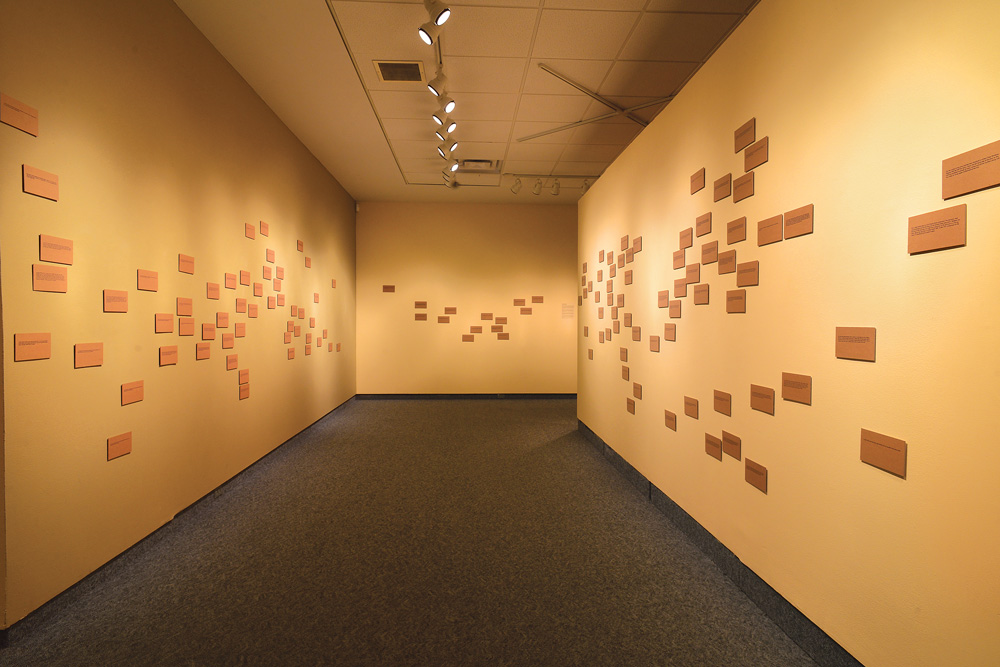In his recent installation project, A Studio (2014), Theo Sims reconstructed a visit to the Winnipeg studio of artist Aganetha Dyck with a written inventory of its contents. There were 133 index card–sized text panels placed in panoramic formation in the gallery, from close to the floor to high on the wall, along three sides of the space. Each bore a short text delicately silkscreened on the surface that described a feature of Dyck’s studio, which is in a historic building in Winnipeg’s Exchange District. The cards represented a visual mapping of the studio that corresponded to where the actual objects sit in space in Winnipeg. The walls were painted a soft golden shade that complimented the brown cards.
Dyck’s studio is a fascinating place. It is filled with curious objects related to her long-time engagement with bees and various domestic practices such as shrinking woollen clothing and canning, that, by the way of work, yield distinctive and profoundly compelling objects. There was great poetry in Sims’s descriptions of the studio. The texts faithfully described what he saw and sensed with an occasional editorial flourish here and there: “A small piece of lemon yellow honeycombed wax lies downtrodden in the plywood floor like a piece of gum on the sidewalk. It still smells of gift shop candles.”
Sims’s observations were unabashed and frank, down to minute detail: “A pair of classic brown-framed Fendi eyeglasses sits with the arms open on the work desk.” There was poignancy in reading about the rawness of Dyck’s space, its disarray, deterioration and clutter: “A crumbling plaster pillar towers up to the ceiling with its peeling paint sanded down smooth, revealing light scrapes and scars with odd patches of smooth white filler.” Dyck’s charismatic presence infused the material world Sims described—there were no inanimate objects.
Sims’s installation lay only steps away from a gallery collection that includes Tom Thomson’s palette, cup, mandolin and other items that belonged to the artist. These are popular attractions for visitors and they provide further evidence that the objects that surround artists are powerfully charged with presence. Sims paid homage to Dyck with his project. He acknowledged her long-standing commitment to artmaking, the breadth of her practice and the substantial accomplishments of her career.
This is a review from the Fall 2014 issue of Canadian Art. To read more from this issue, visit its table of contents.

 Installation view of Theo Sims's A Studio, 2014. Screenprinted cardstock, 10.1 x 17.7 cm each. Photo: Willy Waterton.
Installation view of Theo Sims's A Studio, 2014. Screenprinted cardstock, 10.1 x 17.7 cm each. Photo: Willy Waterton.







